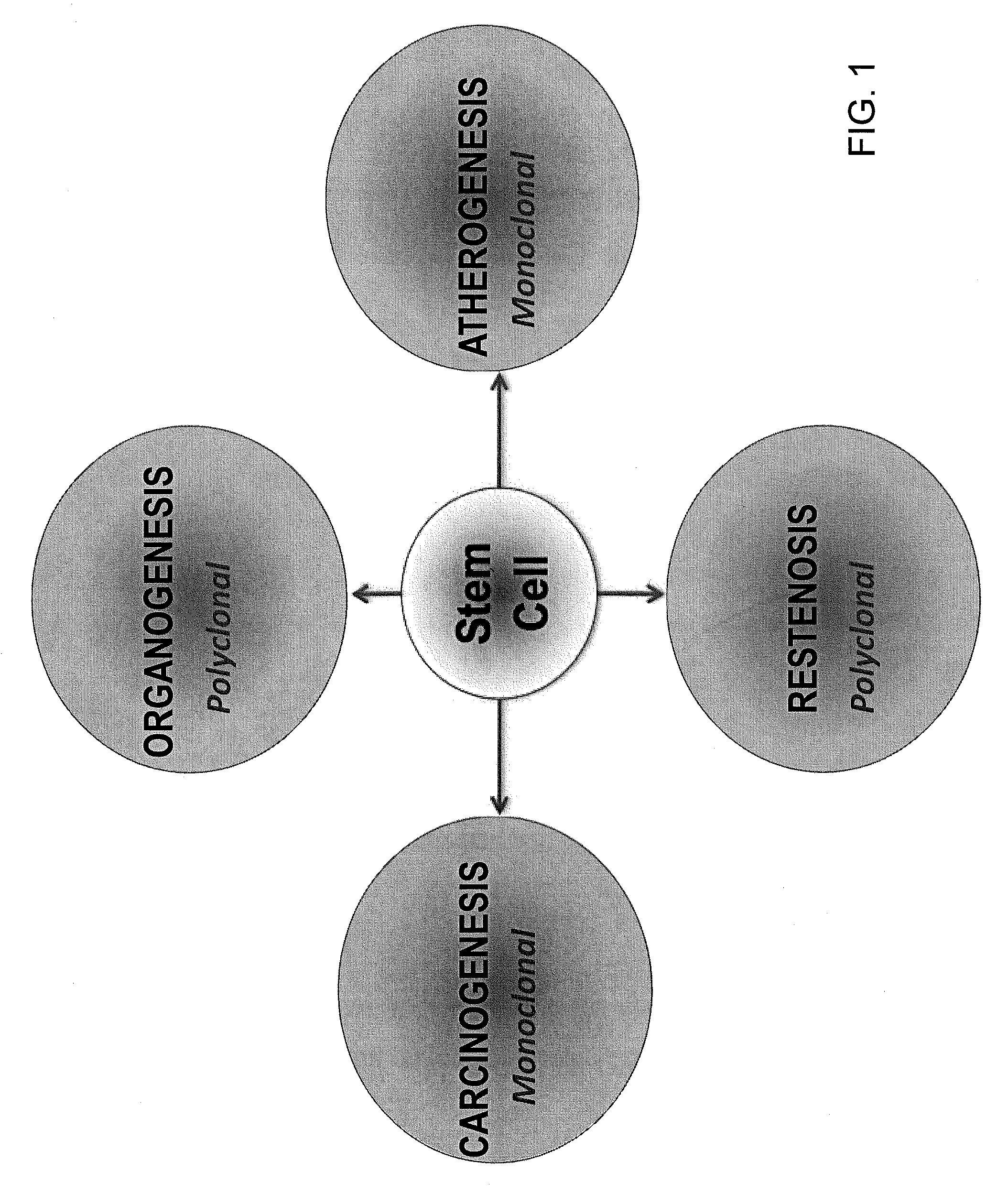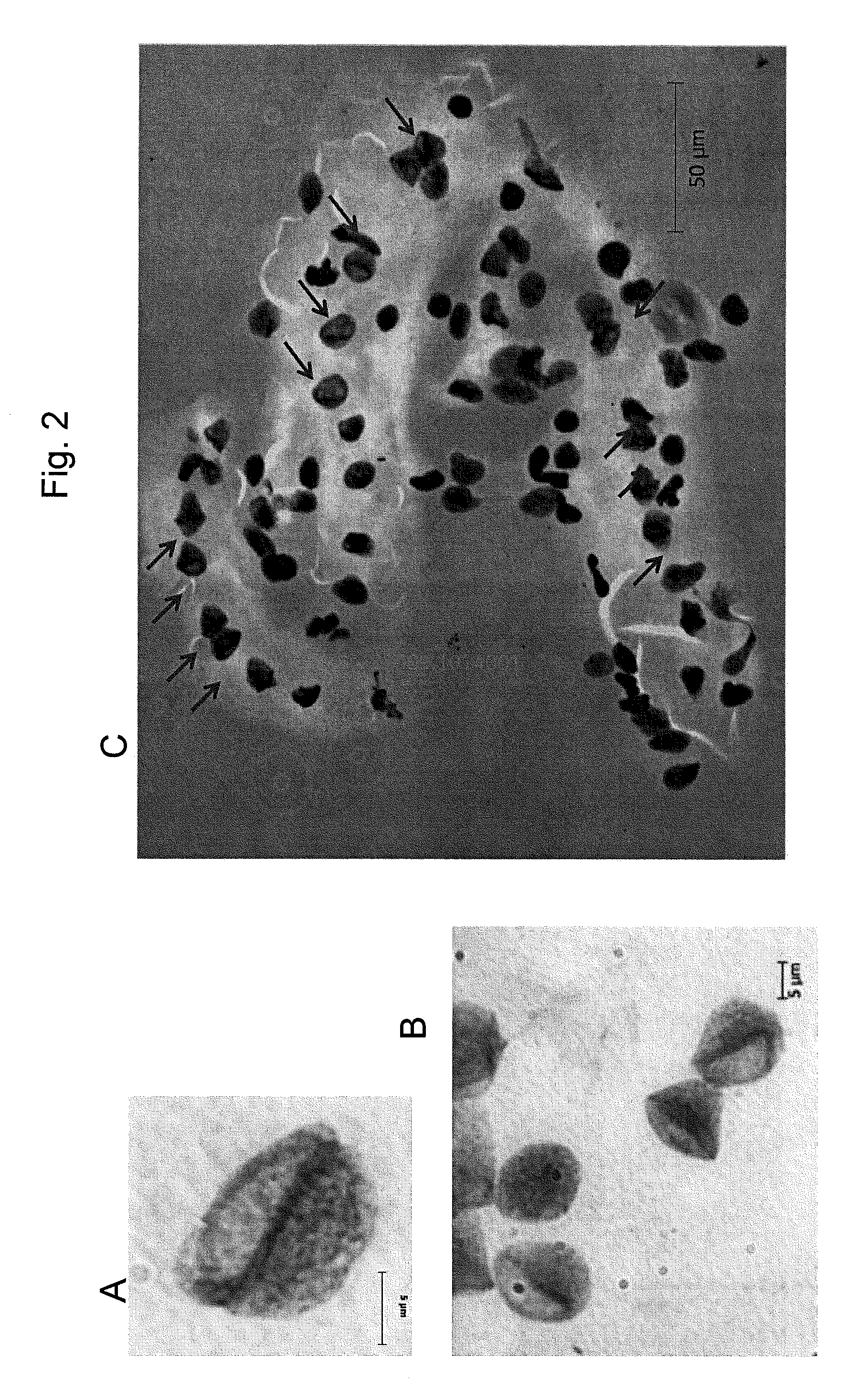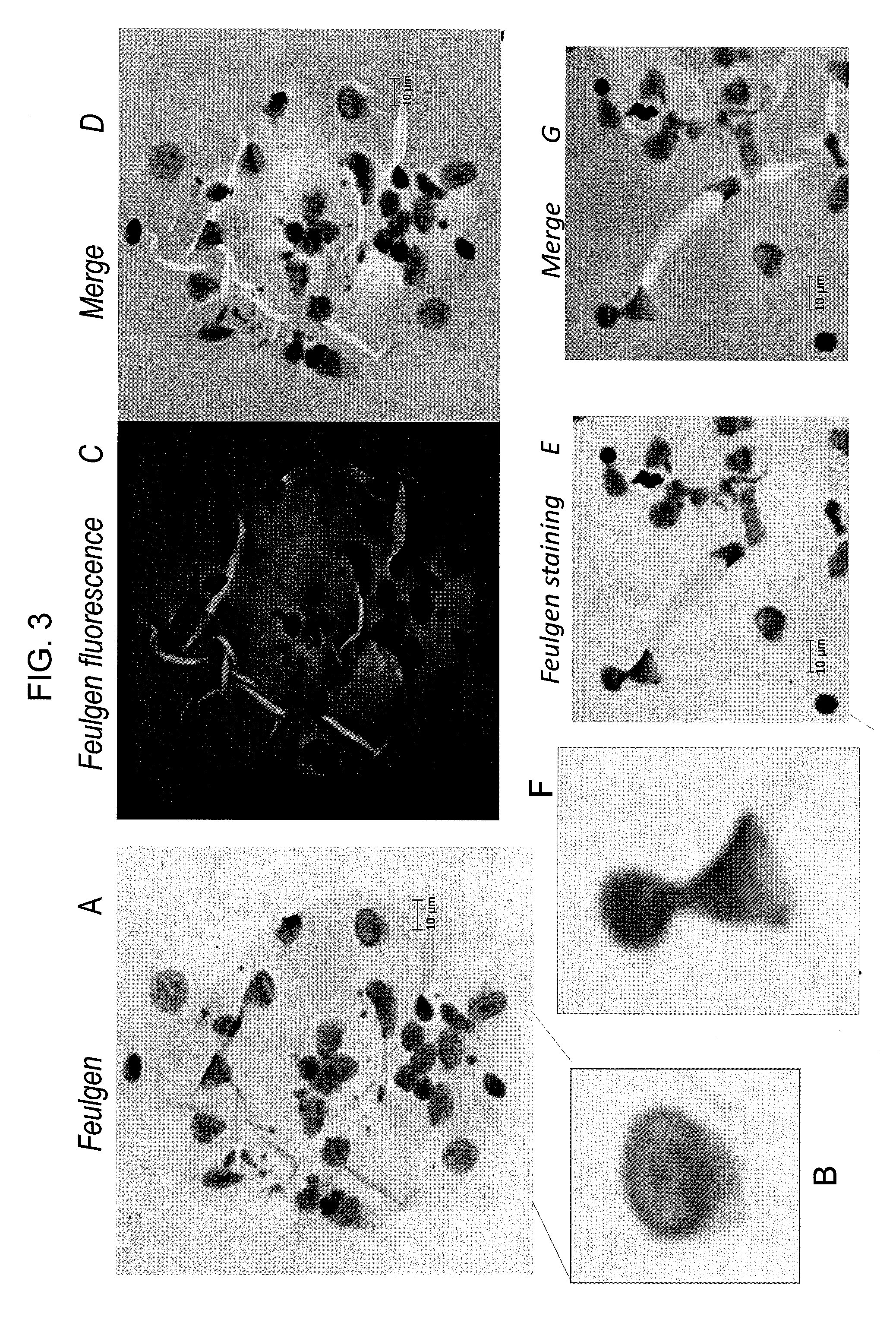Wound healing metakaryotic stem cells and methods of use thereof
a technology of metakaryotic stem cells and wound healing, applied in biochemistry apparatus and processes, instruments, material analysis, etc., can solve the problems of affecting the quality of life, affecting the and the improvement of these interventions may be only temporary, and achieve the effect of rapid appearance of metakaryotic cells
- Summary
- Abstract
- Description
- Claims
- Application Information
AI Technical Summary
Benefits of technology
Problems solved by technology
Method used
Image
Examples
example 1
Visualization of Metakaryotic Cells in Fetal Kidney Artery
[0113]The tissues shown in FIGS. 2-4 were prepared for visualization of the metakaryotic stem cells substantially as described above. The tissues were obtained from human fetal kidney artery.
example 2
Visualization of Metakaryotic Cells in a Patient with Post-Transplant Restenosis
[0114]A child 2 years old who was recently transplanted, suffered rejection, and over 1 month had rapid progression of diffuse coronary atherosclerosis. The child suffered a cardiac arrest because of this rapidly progressing coronary disease. The child was stabilized on emergent cardiopulmonary bypass support for 6 days until a heart became available. The child's diseased heart was explanted and a new one was provided. FIG. 6 and FIG. 7 include micrographs of freshly-fixed tissues prepared from this subject. FIGS. 6C-D are micrographs showing major blood vessels in pig.
example 3
Vasculogenesis and Bladder Polyp Catheter Injury
[0115]FIGS. 2-4 illustrate vasculogensis. FIG. 17B includes a micrograph of a bladder polyp injury.
PUM
| Property | Measurement | Unit |
|---|---|---|
| diameters | aaaaa | aaaaa |
| diameters | aaaaa | aaaaa |
| thickness | aaaaa | aaaaa |
Abstract
Description
Claims
Application Information
 Login to View More
Login to View More - R&D
- Intellectual Property
- Life Sciences
- Materials
- Tech Scout
- Unparalleled Data Quality
- Higher Quality Content
- 60% Fewer Hallucinations
Browse by: Latest US Patents, China's latest patents, Technical Efficacy Thesaurus, Application Domain, Technology Topic, Popular Technical Reports.
© 2025 PatSnap. All rights reserved.Legal|Privacy policy|Modern Slavery Act Transparency Statement|Sitemap|About US| Contact US: help@patsnap.com



